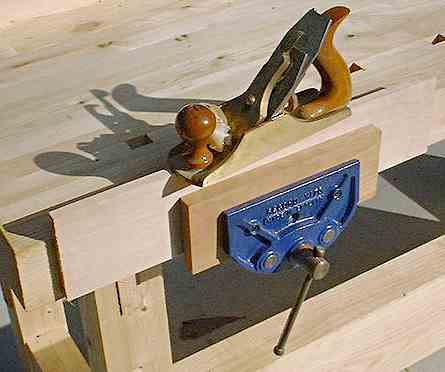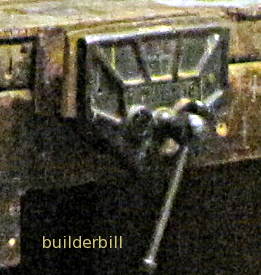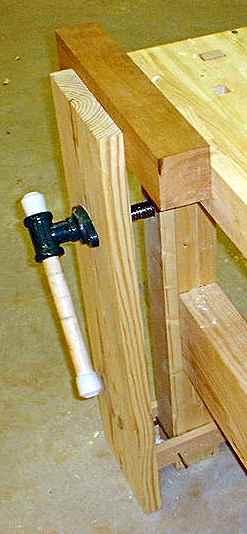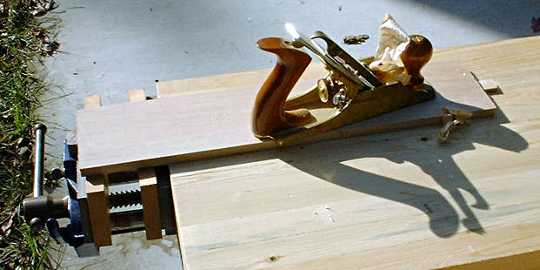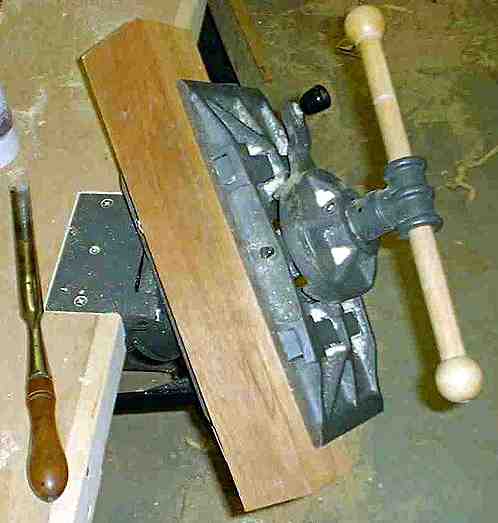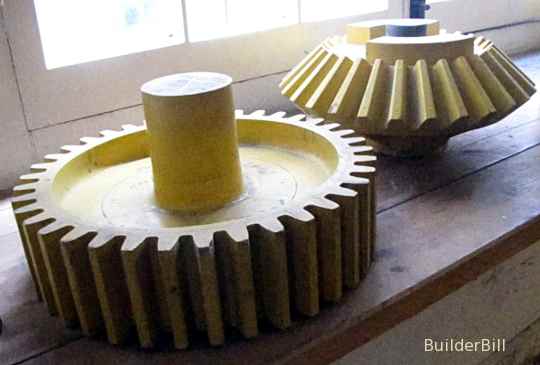 |
|||||||||||||||
Graphical Construction Glossary >> Tools. >> Hand Tools >> Woodworking Vise
Above is a photo of a fairly new bench set-up with a standard vise. Also if I am not much mistaken is a Lee Valley smoothing plane which has an enviable reputation for quality with my North American friends. To the right is a not too great shot of a standard woodworking vise. Not seen really well is just below the central bolt that cranks the outer jaw in and out is a lever that disengages a pawl that fits the thread so that the outer jaw can be opened wide without going to the trouble of making many turns. The joiner's vise is always fixed flush with or slightly lower than the bench that it is fitted into. This is so that when not in use it does not interfere with the work of assembling wide frames and doors. The steel jaws always have timber pieces fitted to them to protect the work. They are changed when they get worn. To right again is what is known as a Leg Vise.
Below is a photo of a Tail Vise These are fixed at the end of a bench and work as a stand alone vise, or as in the photo they have a pin in the movable jaw that works in conjunction with Bench Dogs to hold longer pieces of work. The tail vise reaches down to the floor to minimise the angle of lean on the moving jaw, but it is not to be confused with a Blacksmith's Vise which also rest on the floor. A pair of Bench Dogs along with maybe a packer or two and a pair of Fox Wedges can also be used for holding longer stock firmly. It really depends on the layout of the holes in the bench-top for the dogs. The dogs themselves are made to have different heights above the surface to suit different thickness' of timber.
In the days before electronically controlled machines for making very precise articles out of various materials a Pattern Maker would make highly complex and accurate patterns for the engineering industry. He would be a guy that worked in a part of a factory that made castings in iron, steel or brass.
Just about every conceivable shape from small to large can be cast in metal and before the mould is made the patten maker had to make the patterns out of mainly wood. The vis that he used when working on complex parts had to have the ability to hold odd shapes at different angles. If you didn't find exactly what you are looking for try this search tool that will search the site and the web. "What can be added to the happiness of a man who is in health, out of debt, and has a clear conscience? "When we build, let us think that we build for ever."John Ruskin 1819-1900 |
Hire Equipment  Furniture Fittings - Architectural Hardware - Electronic Locking Systems - Technical Hardware BuilderBill sponsorship Glossary Pages.Roof Glossary and Roofing Formwork Glossary and other tempory work. Hand Tools Glossary Power Tools Glossary Asbestos Glossary Woodwork Glossary Stair Glossary Concrete Glossary Masonry Glossary doors Glossary BuilderBill Books Building Maths  Stair Design  Asbestos Book |
||||||||||||||
|
|
|||||||||||||||
|
Please Note! The information on this site is offered as a guide only! When we are talking about areas where building regulations or safety regulations could exist,the information here could be wrong for your area. It could be out of date! Regulations breed faster than rabbits! You must check your own local conditions. Copyright © Bill Bradley 2007-2012. All rights reserved. |
|||||||||||||||
